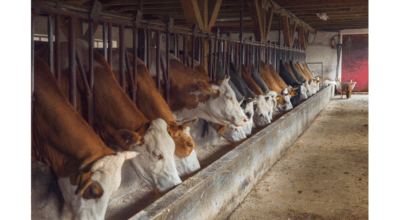The Farm Bill
Published 9:56 am Wednesday, July 3, 2013
by Dell Cotton
I don’t look forward to writing articles that involve Congress, but this is article will be one. We all know that our legislators can’t seem to get along or agree on whether it is night or day. It is sad, and we continue to hope that they will eventually decide to do what is best for us, and compromise when needed. Unfortunately, this is too much to ask, and it showed up again during the House farm bill debate.
First of all, let’s make sure everyone knows what a farm bill is. Every five years or so, Congress develops language through the respective Agriculture Committee in the Senate and House, which reauthorizes programs dealing with agriculture. No, these are not handouts to farmers. Agricultural programs such as crop insurance, conservation and commodity programs are included. About 80 percent of the farm bill deals with nutrition programs, including food stamps. Since one in seven people in this country are on food stamps, you can imagine the expense of this program.
The typical process in Congress is for the Senate and the House to debate and pass their own version of any legislation. The differences, if any, between these two versions of the legislation are then worked out in conference, which is merely a meeting of representatives of the two chambers, who then reconcile the differences to come to a final bill. The final bill then is voted on again by the Senate and the House before becoming law when the president signs it.
The week before last, the Senate acted and passed their farm bill. It included cuts of $4 billion to food stamps and included other budget-saving measures. The House acted last week without any great results. The bill intended to cut $20 billion from food stamps, as well as other budgetary measures, and was defeated. This was the first time in history that a farm bill failed by a vote in the House.
I have no idea what will happen next. The House members went home for the Fourth of July, and I hope there will be attempts to try again when they come back. The main contention involved the cuts in food stamps and nutrition programs. Democrats don’t want any cuts. Traditional Republicans want to tighten rules to close loopholes in the programs to save money. Tea Party Republicans want to cut even more than was proposed. There is even talk of separating nutrition programs away from the bill that funds the usual agricultural programs.
Time will tell. You may say ‘So what – why do we even need a farm bill?’ A farm bill lays out the rules for farm programs, which are critical to our farmers. Subsidies have fallen significantly over the years, and usually only kick in when farm prices are low. These programs and crop insurance are instrumental in creating a safety net for farmers. When I say “when they need it,” I mean when weather problems threaten to wipe out a crop or when overproduction lowers market prices to below the cost of production. These are the programs that stabilize agriculture and keep our farmers in business. Whether we admit it or not, each of us is thankful for these programs, and the farm bill, every time we enter the grocery store and find what we went in there for.
Disagreements over issues are what made this country. Disagreements due to politics should not be tolerated. They lead to getting nothing done, which is of no help to anyone. Let’s hope that sooner rather than later the politicians will become legislators and begin to solve the many issues facing this country today, among them the need for a five-year farm bill.
DELL COTTON is director of the Virginia/North Carolina Peanut Growers Association. He can be reached at dcotton25@vcpeanutdma.com.





